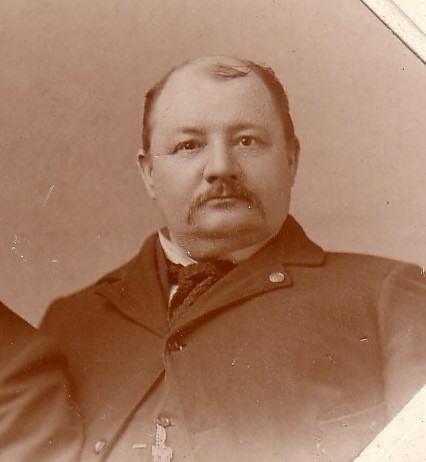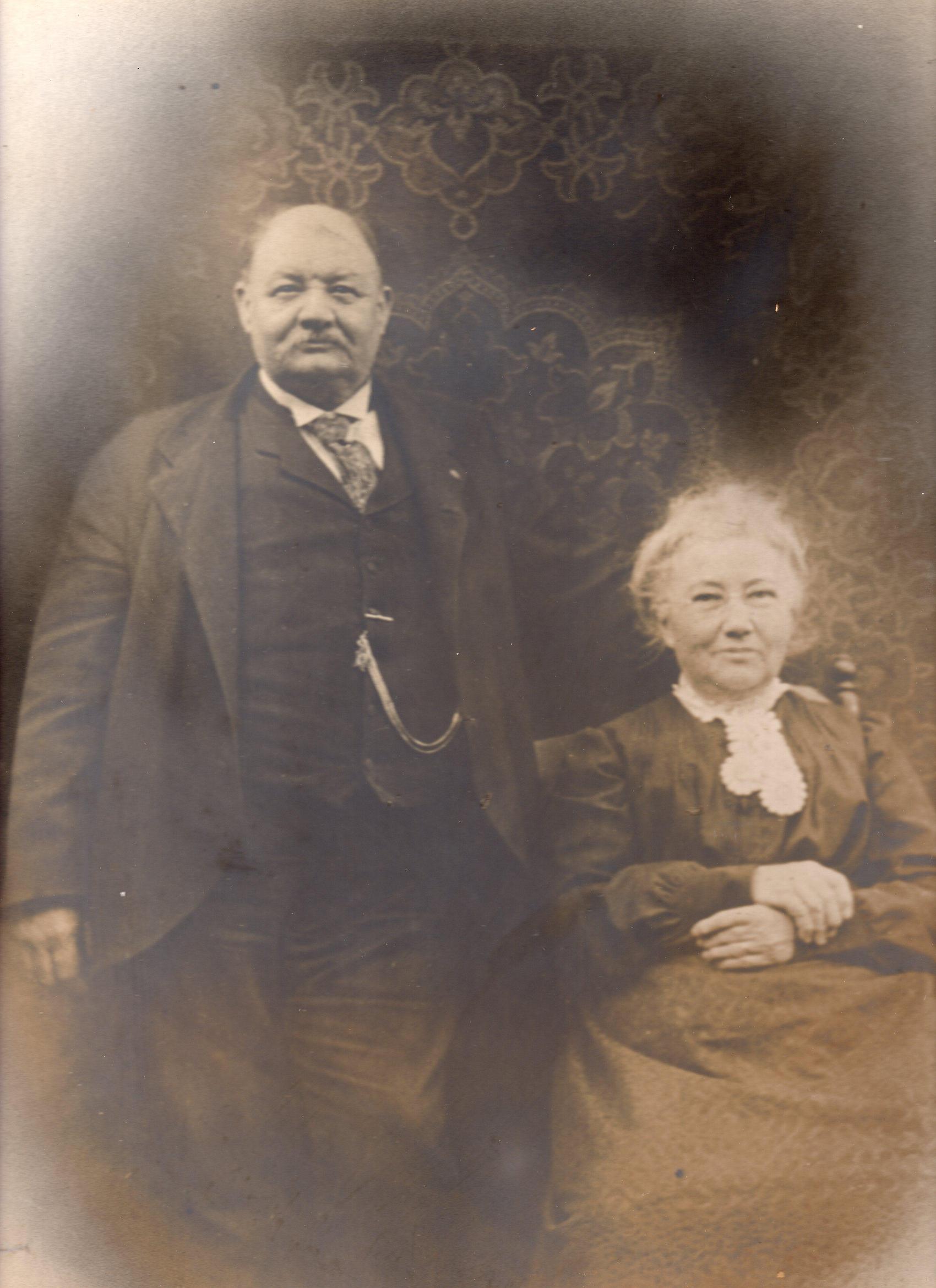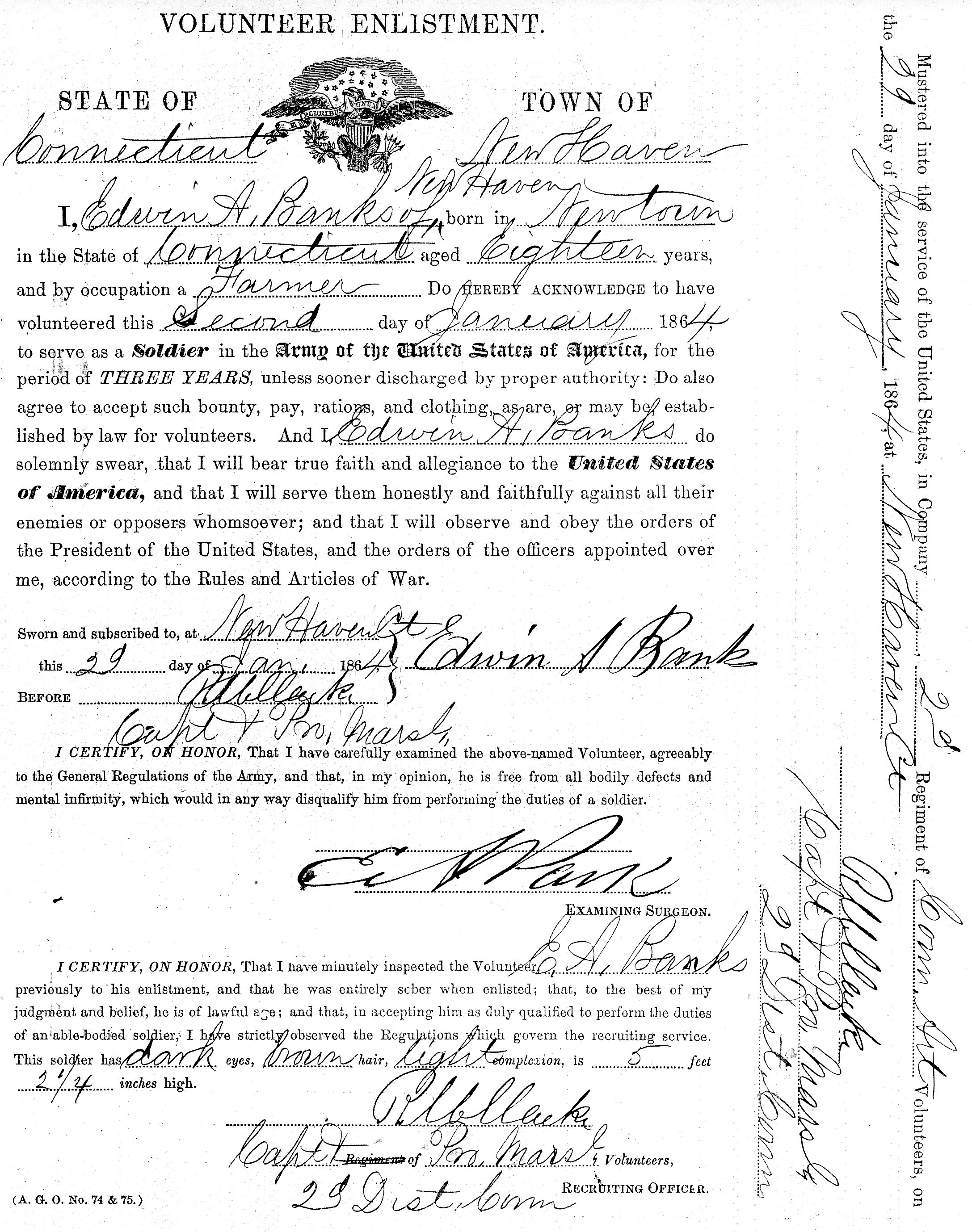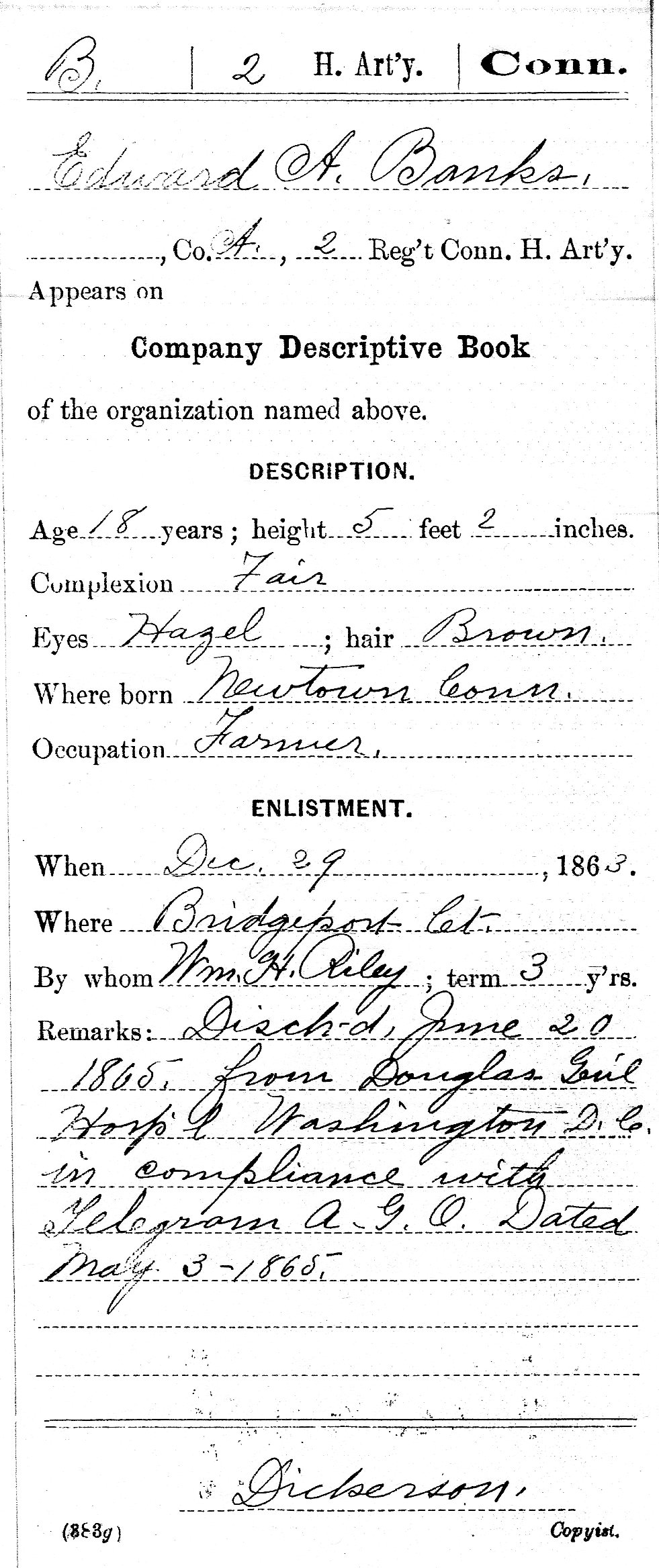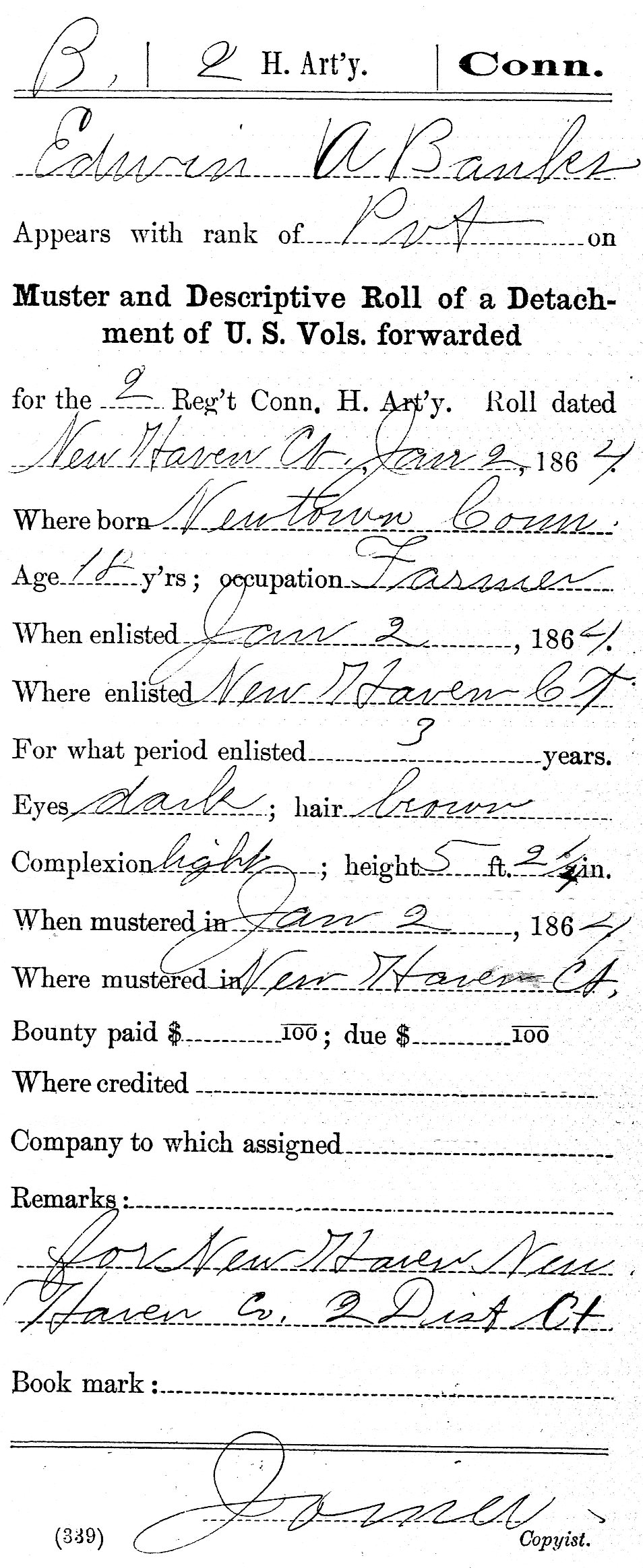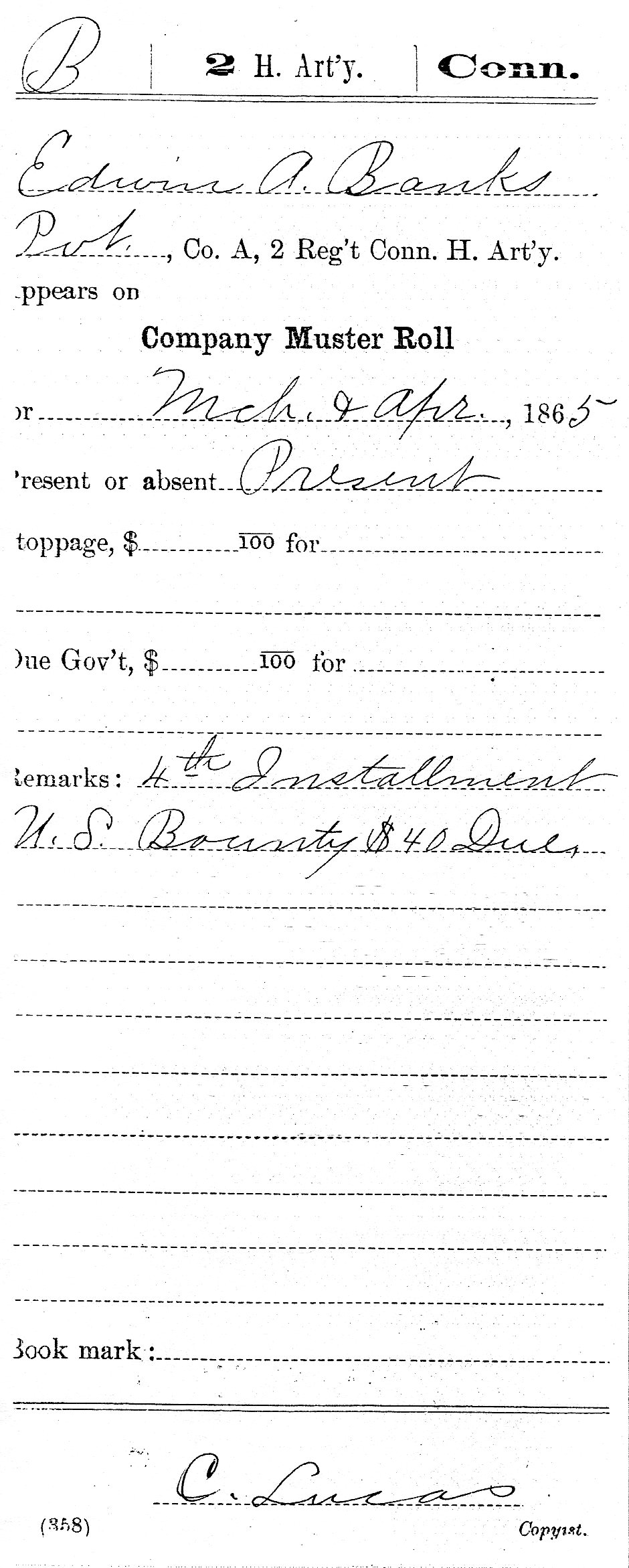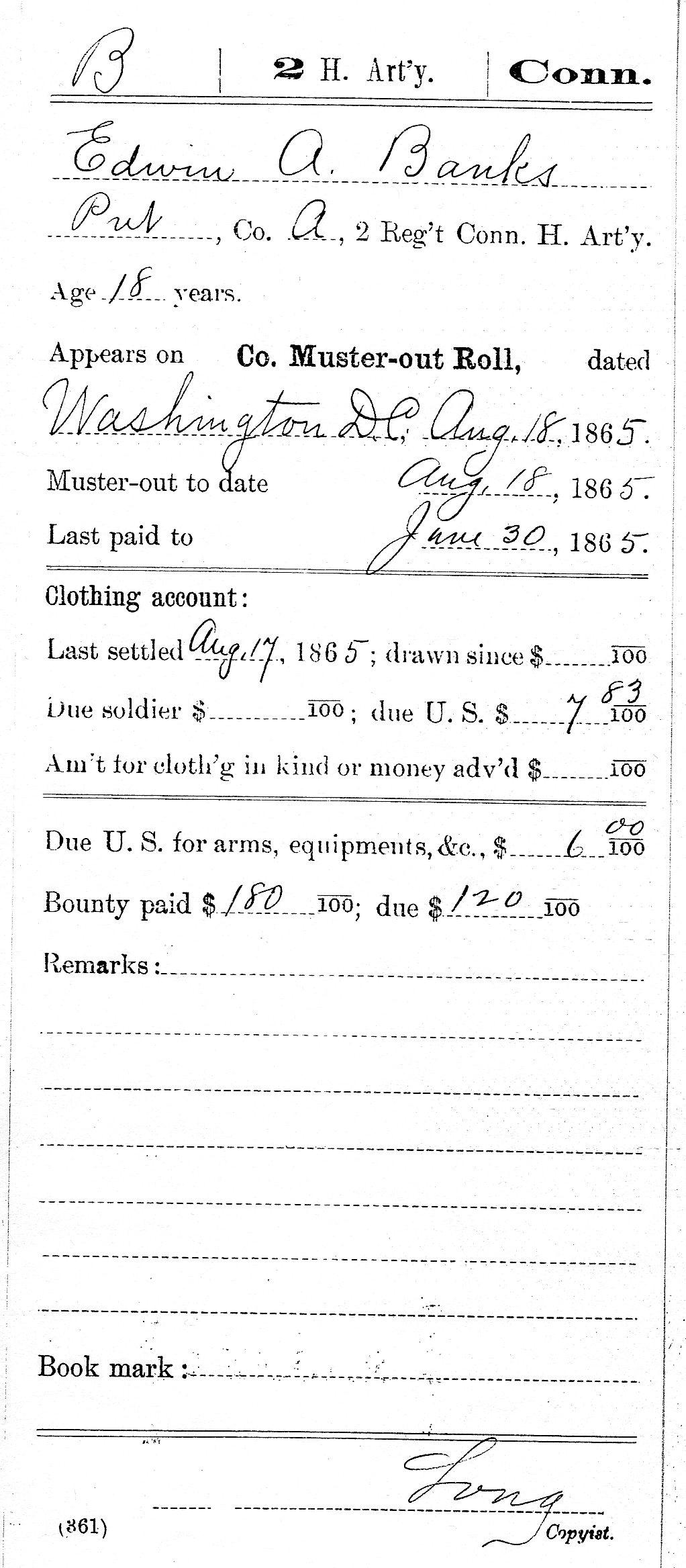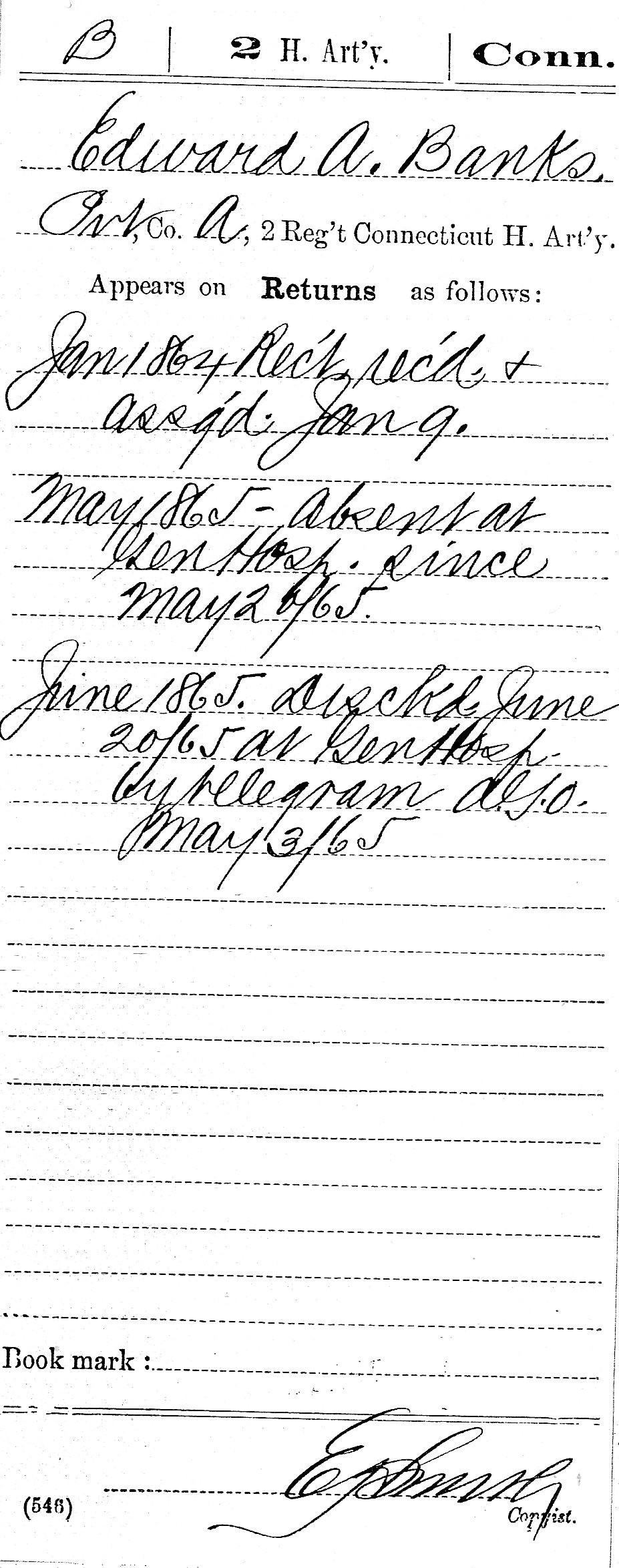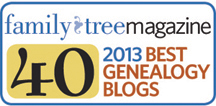This post is another in s series of posts about how to write a family history. I’m hoping this series will inspire some of my regular readers to start writing down their family history. You do not need to have completed all research to start writing about your ancestors, you only need to start. In this post, you will find that you really do not need specific photographs of your ancestor, though it certainly helps. I will again be using my ancestor Edwin Banks for this exercise.
For earlier posts in this series see the following;
- Writing a Family History
- Writing a Family History Using Civil War Service Records
- Writing a Family History Using Census Records
——————–
One of the easiest way to start writing about your ancestors is to take some photographs or other images which have some meaning about your ancestor and start describing it.
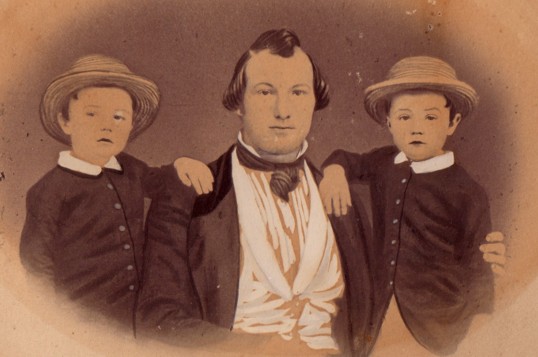
This depiction is the earliest image known to exist about my ancestor Edwin A Banks. It does not appear to be a photograph nor did it appear to me to be a painting. It must have been some other media. The twin boys Edwin and Edward are standing around their father Alfred. It is not known which boy is which. They boys appear to me to be about three or four years making the image from about 1849 -1850. Notice the buys and their father are dressed in very fine clothes. Being that their father was a tailor in Seneca, Ontario County, New York, one might wonder if Alfred made these fine clothes.
——————–
If you have series of images about your ancestor, you can show how your ancestor has grown and aged over time.
This photograph of Edwin Alfred Banks is from about 1895 – 1900. You can see how his appearance changes within a matter of five to ten years from this photograph to the next one pictured below. Notice his receding hair line and more pronounced wrinkles in the second photograph.
In the photograph above, Edwin A Banks is standing next to his wife Mary Ann McKeown. The date of the photograph is unknown, but is must have occurred prior to May 19. 1909. That is the date which Edwin’s wife died. They are both dressed in what is likely their finest clothes or clothes perhaps borrowed at the photographers they went to. It appears that Edwin and Mary are perhaps in their late 50’s of early sixties which would date the photograph in about 1905.
——————–
You can put in a picture of two of your ancestors children.
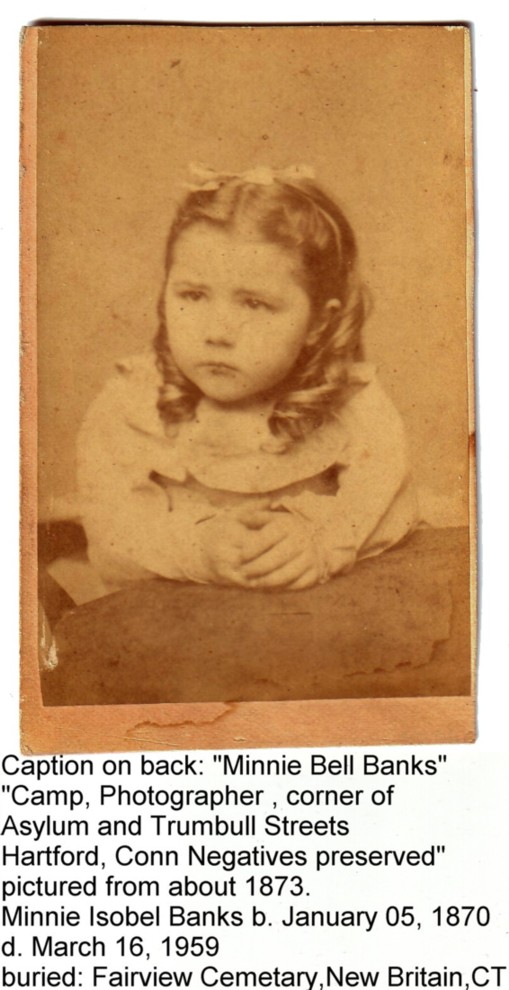
This photograph is of Minnie Bell Banks from about 1873. Minnie is the oldest of Edwin’s three children (Minnie, Alfred, Charles).
——————–
You do not have to have photos or other images with your ancestors in them. Find or take a photo from the place your ancestor lived, even if that place is not the same as today. You can look in old city directories for buildings or street scenes from where your ancestor lived. Perhaps there’s a photograph from the civil war unit your ancestor served in. That’s a great way to introduce your ancestors civil war service.
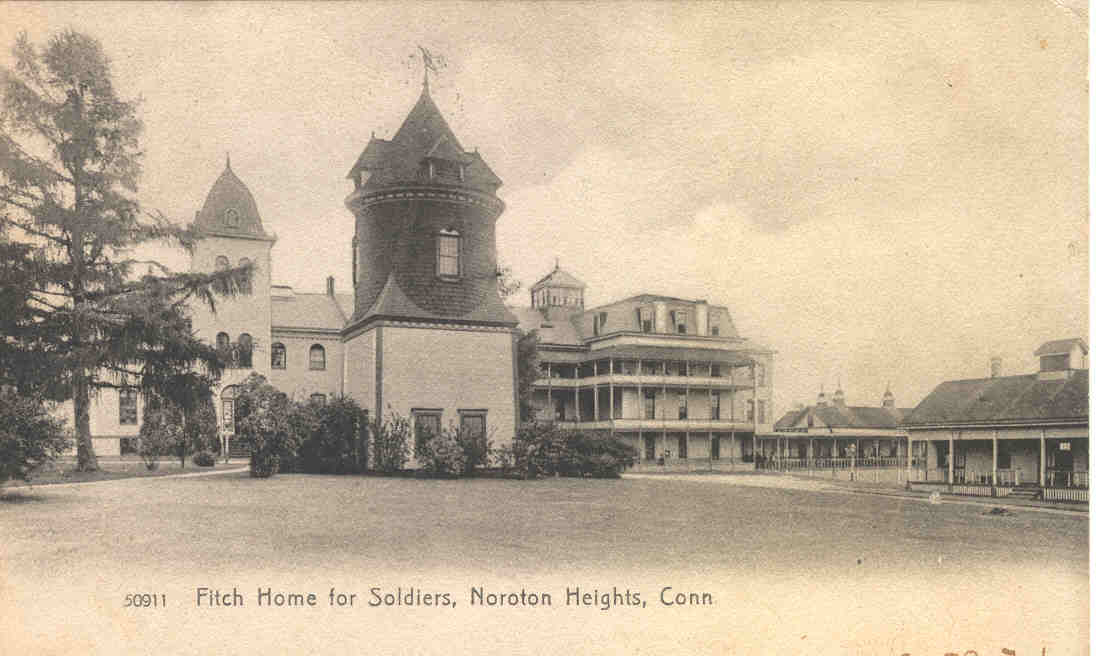
The Fitch Home For Soldiers in Darien, Connecticut is where Edwin spent the last part of his life. Edwin was living there when the 1920 United State Census was taken. He died there on July 3, 1921.
——————–
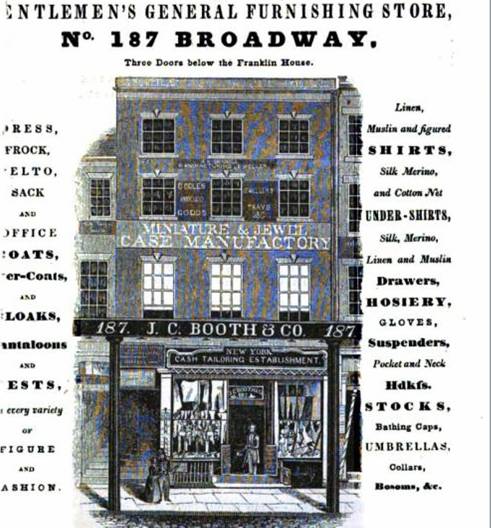
The image above was depicted in the 1845 New York City Directory. The image does not have any relation to my ancestor Edwin Banks, but it’s just a short walk from where my ancestor Dr. Henry L. Sanders lived. Other buildings shown in the directory have a similar structure and composition. This is the New York City that my ancestor would have known.
——————–
Sources
——————–
1) Depiction of Alfred, Edwin and Edward in possession of author’s mother.
2) Photograph of Edwin and Bank in the possession of the author.
3) 1845 NYC Directory
